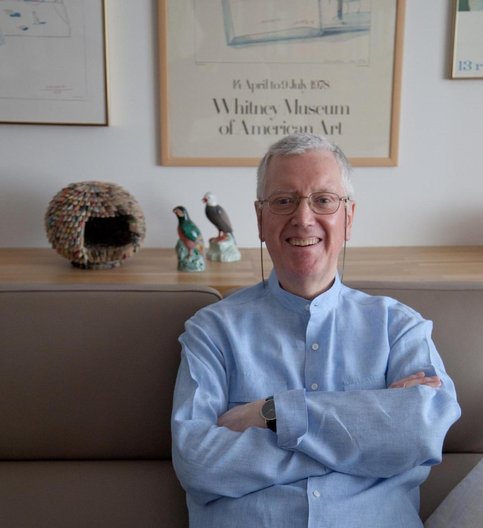
Photo: Sofia Sallons
24 July 2014
by Jenny White
The brilliant John Heskett, who passed away on 25 February this year, was my ever patient and inspirational course tutor on the short-lived ‘HADAF’ (BA (hons) History of Art Design and Film) course at the Sheffield College of Art, now Sheffield Hallam University.
HADAF originated in 1976, a unique and bright new approach to a focused study of three separate disciplines; the history of Art, the history of Design and the history of Film, interdisciplinary yet grounded in social and political context. It attracted tutors who wanted to make a difference and reinterpret the world’s art movements. John characterised this, broadening our definitions, challenging our assumptions, and ceaselessly working to ‘democratise’ design. From the clean sharp lines of the Bauhaus to Hilda Ogden’s wall ‘muriel’ in Corrie – every tactic was used to stimulate discussion and debate. It was the best of all possible worlds; learning and researching the history of Art and Film, I majored in Design in the final year. John and I shared a laugh after I’d found he’d cheekily used me as an example of graduates that were successfully employed in the design industry on graduating (on my own volition, I’d got a factory job for a design company constructing displays and exhibitions). John wanted to transform the way we think about design by showing how integral it is to our daily lives; from the spoon we use to eat our breakfast cereal to medical equipment that saves lives. ‘’Design is’’, said John, ‘’to design a design to produce a design’’ (Design: a very short introduction, Oxford University Press, 2005).
Post Sheffield he rightfully received an international reputation, as Professor of Design in Chicago and then at Hong Kong Polytechnic and for his many books and articles and presentations including Industrial design (Thames & Hudson, 1980), Toothpicks and Logos: Design in Everyday Life (2002) and Design: a very short introduction (2005). John was on the jury for the largest design world prize given by INDEX: Design to Improve Life®, a Danish NPO designing sustainable solutions to global challenges. His research explored how design creates and adds economic value, design policy in governments and corporations, the relationship between design and innovation, the problems of changing the nature of markets, and designing for global markets. He was very supportive when I was promoting British design in Japan. I met him recently on a plane from Copenhagen where he enthused about the joy of eating (sustainable) fish, caught locally on the South coast and expertly cooked by his wife Pamela. Last year I was able to connect him with our colleagues expanding British Council business in Hong Kong, and as always, John was an invaluable link.
Jeremy Myerson writes of his legacy as a design pioneer on the website www.johnheskett.com ‘’He was among the very first design writers and thinkers to chart the path globally from the old industrial form-giving role of the designer to the strategic consultant in management. If he hadn’t mapped the route, then designers would not have found a way into the upper echelons of business and many big brand names would not have enjoyed the same resonance’’. It was typical in his last message to friends, that it was clear that his illness was not interrupting his work, so it was with great surprise and sadness I learnt of his passing only recently. John’s passions helped define our current design world, writing for INDEX “Design is the human capacity to shape and make our environments in ways that satisfy our needs and give meaning to our lives.”
John Heskett (1937-2014). John passed away on February 25th, 2014.
John Heskett was married to Pamela Heskett. He had two children and six grand-children.
Category
Commentary